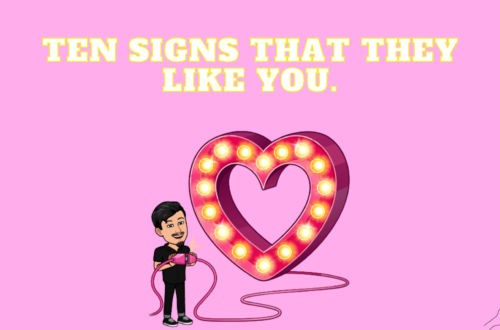
What is Jazz Poetry?
Jazz Poetry is a literary genre that speaks about Jazz music and has Jazz rhythm. Authors of Jazz Poetry read poetry with rhythms of Jazz music. Like Jazz music, Jazz Poetry takes different forms, rhythms, and sounds.
Historically African Americans were treated as nothing but enslaved people and had no access to words. In his book Digitopia Blues, John Sobol said, Jazz was a powerful oral means of self-empowerment for African Americans. Sobol stated that constrained poets in the literate tradition had developed a sound kinship with Jazz. And these poets mimicked or recreated Jazz models in their poetry, which became known as Jazz Poetry. In the 1920s, poetry and Jazz music emerged simultaneously, forming a new genre of Jazz Poetry.
Harlem Renaissance
During the Harlem Renaissance, Jazz music was a vital part of African-American culture. Many poets like Langston Hughes quickly adapted Jazz music to portray African-American voices. Mina Loy and Hart Crane were the first poets to experiment with Jazz culture. Langston Hughes was the first true poet of Jazz. He is the Father of Jazz Poetry. The period of the Harlem Renaissance acts potential for the rise of Jazz Poetry, and Hughes is a big part of it. During this time, the main themes revolving around Jazz Poetry were racial pride and individuality.
Beat Movement
In the 1950s, the themes of Jazz Poetry shifted to spontaneity and freedom. Members of the beat generation began to embrace African-American culture, and both poetry and music in Jazz were a powerful movement against the status quo. Beat poet Bob Kaufman is one of the greatest Jazz poets after Hughes. Many artists like Kaufman paid homage to Jazz in their poems.
The Black Arts Movement
In 1965, the Black Arts Movement emphasized black people as a race, culture, and nation. Black Arts poets used Black musical forms, especially Jazz. Amiri Baraka revived Jazz Poetry in the 1960s as a source of black pride. In 1969, Nikki Giovanni recorded a few of her poems with a Jazz backdrop. Jayne Cortez, another notable Jazz poet during the Black Arts Movement, delivered her poetry with a Jazz musical backdrop.
Jazz Poets
Apart from Langston Hughes and Amiri Baraka, other notable Jazz Poets were Marvin Bell, Sterling Brown, Hayden Carruth, Michael S. Harper, Jack Kerouac, and Yusef Komunyakaa, Nathaniel Mackey, Kenneth Rexroth, and Sonia Sanchez.
Jazz Poems
The Weary Blues by Langston Hughes, published in 1926, is the most important and famous piece in Jazz Poetry. Langston also wrote Montage of a Dream Deferred in 1951. In 1960, Gwendolyn Brooks published We Real Cool, another important Jazz Poetry piece.
Some famous Jazz poems are
- Death and Fame by Allen Ginsberg
- Cartographies of Silence by Adrienne Rich
- I am a Jazz Singer She Replied and Greens by James A Emanuel
- Jazz Chick by Bob Kauffman
- The Ballad Of How Macpherson Held the Floor by Robert William Service
- Balloon faces by Carl Sandburg
- Bojangles and Jo by James Emanuel
- Cassidy’s Epitaph by Andrew Barton Paterson
- Four Letter Word by Emanuel James
- Honky Tonk in Cleveland Ohio by Carl Sandburg
- Howl by Allen Ginsberg
- Jazz Fantasia by Carl Sandburg
- Jazzanatomy by James Emanuel
- O-Jazz-O by Bob Kaufman
- The Philistine and the Bohemian by Robert William Service
- Soledad by Robert Hayden
Books in Jazz Poetry
Famous and impressive books to read in Jazz Poetry are
- Jazz Poems by Kevin Young
- Blues Poems by Kevin Young
- Jazz Poems by Ken Rubin
- Nights at the Turntable: Jazz Poetry by Nathan Nicolau
- The Poetry and Poetics of Amiri Baraka by William J Harris
- Notes to make the sound come right by T. J. Anderson
- Black pow-wow by Ted Joans
- The Muse is Music: Jazz Poetry from the Harlem Renaissance to Spoken Word by Meta DuEwa Jones.
Other notable books are Doctor Jazz by Hayden Carruth, Translating Jazz into Poetry: From Mimesis to Metaphor by Erik Redling, The Jazz Poetry Anthology by S Feinstein, Jazz Poetry: From the 1920s to the Present by Sascha Feinstein, A bibliographic guide to Jazz Poetry by Sascha Feinstein, and Jazz Poetry are The Second Set: The Jazz Poetry Anthology.
So, this was Jazz Poetry. Talking about music and forgetting to mention the gold ERA of the Indian Music industry would be a crime. Check out the Top Singers and Bands of the Indi-pop ERA.




